
Angola (1991-1999) ;Argentina (1975-1991) ;Austria (1921-1922)
Belarus (1994-2002) ;Bolivia (1984-1986) ;Brazil (1986-1994) ;Bosnia-Herzegovina (1993)
Chile (1971-1973) ;China (1939-1950)
Free City of Danzig (1923) ;Ecuador (2000);England ;Greece (1944-1953)
France (1789-1797) ; Georgia (1995) ;Germany (1923-1924, 1945-1948)
Greece (1944-1953) ; Hungary (1922-1924, 1944-1946)
Israel (1979-1985) ; Japan (1944-1948); Krajina (1993) ; Madagascar (2004)
Mexico (2004) ; Mongolian Empire (13th and 14th Century AD) ; Nicaragua (1987-1990)
Persian Empire (1294) ;Peru (1984-1990) ;Poland (1922-1924, 1990-1993)
Romania (2000-2005) ; Ancient Rome ; Russia (1921-1922, 1992-1994)
Taiwan (late-1940's) ; Turkey (1990's) ; Ukraine (1993-1995) ; Yap (late 1800's)
Yugoslavia (1989-1994) ; Zaire (1989-1996) ; Zimbabwe (1999 - present)
Seberapa besar hiperinflasi yang terjadi di negara-negara tersebut di atas? KLIK di SINI....
Sejarah terus berulang .....
Hyperinflasi menyebabkan nilai uang kertas menjadi tidak berharga....
Saat ini masih bisa terasakan kejadian Zimbabwe...
Zimbabwe FAQ – why the hyperinflation? how do they fix it?
Why is Zimbabwe currently experiencing hyperinflation?
Zimbabwe is currently experiencing an inflation rate of over 7600% per annum. The crisis started in 2000 when the Zimbabwean government effectively destroyed their agricultural industry by displacing farmers from their lands.
Zimbabwe’s economy immediately went into recession and inflation began to rise.
So what did the Zimbabwean government do to try and correct this problem?
They printed more currency.
Why did they do that?
They had salaries to pay, projects to finance, things to buy. Just like everyone else they were suddenly faced with the crisis of having to pay much more for things, and they didn’t have enough, so they printed more money to cover it.
Is printing money a problem? Don’t governments do that all the time?
The reserve bank of a country prints currency. Current economic theory holds that an independent reserve bank is superior to a state owned bank. Independence means that they set monetary policy (without political interference) and they decide how much currency to print.
A prudent reserve bank will take care not to grow the money supply (physical currency) at a rate above the CPI inflation rate.
Zimbabwe’s Reserve Bank is state owned and the Governor, Dr Gideon Gono, has been ordered by Mugabe (on an ongoing basis over the years since 2000) to print amounts of currency that grow the money supply at a rate well over Zimbabwe’s inflation rate. Mugabe has in fact stated recently (in July 2007) that Zimbabwe will continue this practice of printing more currency as and when required.
This practice has led to hyperinflation.
How does printing more money cause hyperinflation?
Whenever money supply is increased (without a corresponding increase in the overall economy), the currency is debased. In other words, it loses value. So the cost of goods rise to counter this loss of value. If the supply of money increases above the inflation rate, the rate of inflation increases too.
Zimbabwe has been printing trillions of additional Zim dollars at a time when their economy has actually been contracting (quite rapidly). The punitive regulatory measures that Mugabe has imposed on traders (ordering that they fix their prices) has served only to increase the rate at which Zimbabwe’s economy contracts. So you have an ever increasing amount of currency chasing an ever shrinking amount of goods.
Why don’t they simply stop printing money?
If they do that, they won’t be able to pay government workers’ salaries which were recently hiked by 300% (which was an insufficient increase). They’ll default on all the things they have to pay for and they don’t want to deal with that scenario. They prefer to inflate their way out of their crisis.
Zimbabwe will immediately enter a deep depression if currency growth halts. Arguably, they are in one already, but they can still buy things with Zim dollars. If money supply growth is frozen, people simply won’t have enough currency to buy anything anymore.
If people cannot afford to buy anything, won’t prices come down?
Yes, but there are other problems. Mugabe has regulated the economy by barring businesses from raising their prices and in fact ordered them (in July 2007) to reduce prices by 50%, in an attempt to rein in inflation.
It is a losing proposition to businesses, so their alternatives have been to either defy Mugabe or to cease trading. Those who choose to defy him, are arrested. So damage is being done to whole business sectors and their supply chains. Whole industries will be wiped out if they are not free to set prices rationally.
That is the greater danger, that when the time comes that rational economic policies are applied, there will be no businesses left to respond. Confidence would have been completely lost and it will be difficult to lure the major chains back. Frankly, I don’t see a ZANU-PF government ever enjoying confidence again. Unless the people of Zimbabwe elect a new party to govern, Zimbabwe will not recover. They will remain a crippled country.
So what is the best strategy forward for Zimbabwe?
That’s the trillion dollar question. However, we do have Bolivia as an example. In 1985, they eliminated hyperinflation within a few months by enacting the following measures:
* they linked their currency to a stable foreign currency (in their case, the United States dollar)
* they froze government spending
* they stopped printing currency
* they lifted all price controls
* they deregulated their economy
Zimbabwe will most likely have to do all that and more. They could link their currency to the South African Rand like Namibia has done. The Namibian dollar is linked 1:1 to the Rand.
Zimbabwe also has to rebuild their agricultural sector.
Sources:
Bolivia
TIMELINE: Chronology of Zimbabwe’s economic crisis
A non-currency country
The World’s Greatest Unreported Hyperinflation
Alasan Fundamental Untuk Memilih Dinar…
1. Dinar emas adalah uang yang digunakan oleh Rasulullah SAW tidak hanya untuk jual beli, tetapi juga untuk penerapan syariah itu sendiri.
a. Nisab zakat yang diukur dengan 20 Dinar atau 200 Dirham.
b. Batasan Hukum potong tangan bagi pencuri batasannya adalah nisab pencuri ¼ Dinar.
c. Diyat atau uang darah [dibebaskan dari hukum qisas (dibunuh)] yang besarannya 1000 Dinar.
Lantas bagaimana kita bisa tahu seseorang menjadi wajib zakat atau malah sebaliknya berhak menerima zakat kalau ukurannya yang berupa Dinar atau Dirham saja kita tidak mengenalnya ?.
2. Fakta di dunia modern ini bahwa uang kertas tidak akan bertahan terlalu lama. Semua uang kertas yang ada di dunia modern ini, tidak ada satupun yang telah membuktikan dirinya bisa survive dalam seratus tahun saja. Bisa jadi nama uangnya masih ada, tetapi jelas daya belinya sangat jauh berbeda dalam rentang waktu tersebut.
Padahal disisi lain ada uang yang daya belinya terbukti tetap lebih dari 1400 tahun yaitu Dinar. Di jaman Rasulullah SAW 1 Dinar cukup untuk membeli kambing, saat inipun 1 Dinar bisa membeli kambing yang baik di Jakarta.
Grafik Harga Emas Harian - Mingguan - Bulanan -Tahunan
Investasi Emas : Koin Dinar, Emas Lantakan Atau Emas Perhiasan ?
 Default value (nilai) uang kertas, saham,
Default value (nilai) uang kertas, saham, Nah sekarang sama-sama investasi emas, mana yang kita pilih ? Koin Emas, Emas Lantakan atau Perhiasan ?
BACA SELENGKAPNYA...........
Rabu, 13 Januari 2010
Historic and Current Hyperinflation From Across the Globe ....
Investasi Emas, Why Not?
 Emas dari dulu memang menjadi fenomena yang menarik hati. Memang benar apa yang dilakukan para orang tua jaman dulu yang gemar membeli emas atau tanah dari pada barang lainnya. Karena mereka tahu bahwa harga emas bakal naek terus dari tahun ke tahun. Investasi emas untuk jangka panjang (long term) memang sangat menjanjikan disamping simple juga tidak terlalu membutuhkan keahlian khusus untuk menjalankannya. Sama halnya dengan investasi tanah. Kendalanya mungkin pada keamanan penyimpanan emas itu sendiri, apakah di simpan di rumah atau di bank (Safe Deposit Box Bank). Perjalanan harga emas dari tahun ke tahun sangat fantastis, tahun 1998 harga emas per gramnya mencapai Rp 25,000,-, tahun 2004 sudah mencapai Rp. 90,000,-, sedangkan sekarang harga per gramnya per tanggal 29 Mei 2008 sudah mencapai Rp. 279,000,-. Memang harga emas belakangan ini sempat naik turun akibat fluktuasi harga minyak dunia. Ya, setidaknya kita perlu jeli untuk memanfaatkan peluang berinvestasi emas mengingat kondisi tersebut.
Emas dari dulu memang menjadi fenomena yang menarik hati. Memang benar apa yang dilakukan para orang tua jaman dulu yang gemar membeli emas atau tanah dari pada barang lainnya. Karena mereka tahu bahwa harga emas bakal naek terus dari tahun ke tahun. Investasi emas untuk jangka panjang (long term) memang sangat menjanjikan disamping simple juga tidak terlalu membutuhkan keahlian khusus untuk menjalankannya. Sama halnya dengan investasi tanah. Kendalanya mungkin pada keamanan penyimpanan emas itu sendiri, apakah di simpan di rumah atau di bank (Safe Deposit Box Bank). Perjalanan harga emas dari tahun ke tahun sangat fantastis, tahun 1998 harga emas per gramnya mencapai Rp 25,000,-, tahun 2004 sudah mencapai Rp. 90,000,-, sedangkan sekarang harga per gramnya per tanggal 29 Mei 2008 sudah mencapai Rp. 279,000,-. Memang harga emas belakangan ini sempat naik turun akibat fluktuasi harga minyak dunia. Ya, setidaknya kita perlu jeli untuk memanfaatkan peluang berinvestasi emas mengingat kondisi tersebut.
Kenapa Emas?
TEORI INVESTASI
Jangan Taruh semua Telor dalam satu keranjang. Pastikan investasi anda berada dalam beberapa instrumen invesatsi anda selain tanah, saham, obligasi, dan emas tentunya.
SEJARAH BERKATA
Sejarah membuktikan emas tidak memiliki efek inflasi (ZERO INFLATION EFFECT) dan cendrung stabil dengan nilai yang riil.
TEORI KELANGKAAN (SCARCITY)
Di beberapa negara terjadi penurunan produksi emas, sehingga menimbulkan kelangkaan (scarcity) emas di masyarakat sedangkan permintaan terhadap emas meningkat. Hal ini bisa memicu kenaikan harga emas.
(Ditulis oleh : Gede Suarnaya, dari berbagai sumber)





 Thursday, 11 February 2010 08:35
Thursday, 11 February 2010 08:35 
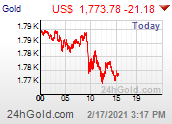
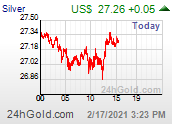





















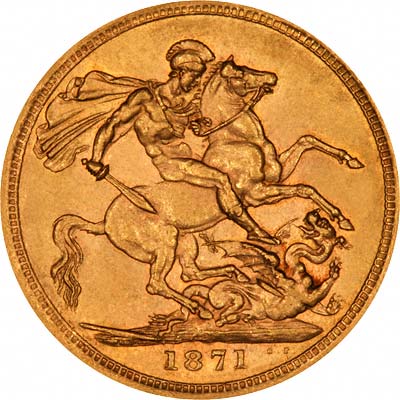










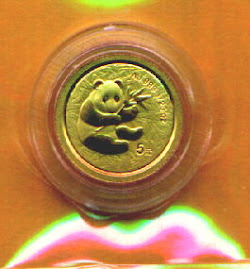


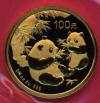
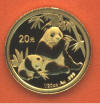

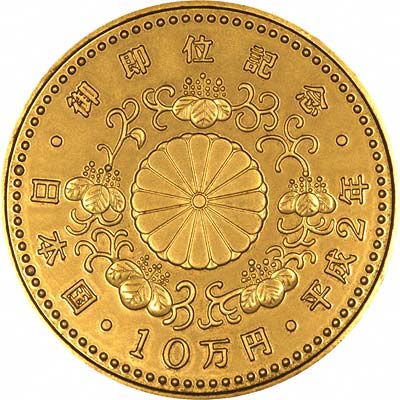
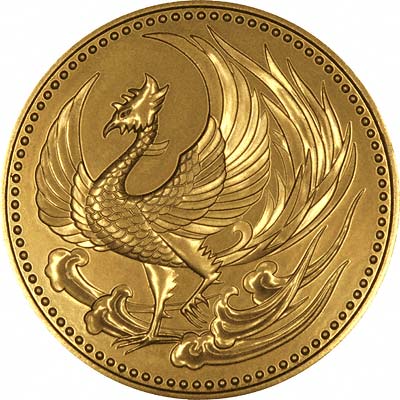


















Tidak ada komentar:
Posting Komentar